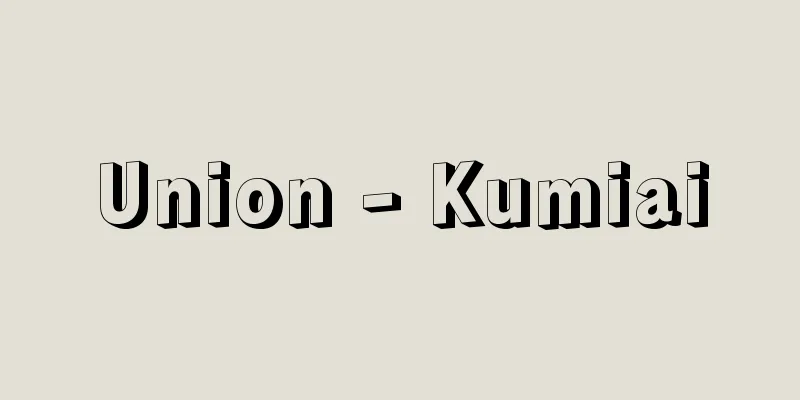Punic Wars

|
A series of three wars in which the ancient Romans gradually defeated and finally destroyed Carthage, a powerful nation in the Western Mediterranean world. The word Punic means Phoenician, and the name comes from the fact that Carthage arose as a Phoenician colony city-state. [Kinji Hidemura] CauseThe early relationship between Rome and Carthage was friendly, and Rome's interests, initially limited to agrarian Italy, did not come into conflict with Carthage's commercial monopoly in the Western Mediterranean. Treaties were probably concluded between the two countries in 509 and 348 BC, mutually guaranteeing Carthage's commercial monopoly and security for the Italian coastal cities, and supplementary agreements were concluded in 279 BC in response to the invasion of Italy by Pylos, King of Epirus. However, when the Mamertines, a mercenary captain from Campania in Italy who had occupied Messina, were attacked by Syracuse and asked Rome for help, Carthage accepted and entered Messina while Rome hesitated. As a result, Rome, which already had influence over southern Italy, feared that the safety and commerce of the cities in the region was being threatened, so General Appius Claudius Caudex, without waiting for approval from the Senate, crossed the Strait of Messina and landed in Sicily, where he declared war on Carthage, thus starting the Punic Wars. [Kinji Hidemura] 1st(264 BC - 241 BC) Appius Claudius and M. Vasilius Messala defeated the Carthaginian and Syracusan armies in northeastern Sicily, forcing Syracuse to join forces with Rome (263 BC). Rome then captured Agrigentum, but Carthage continued to fight, so the only way to decide the outcome was a naval battle. Rome hastily built 160 warships, and to make up for their inferior seamanship, they devised a new tactic of attaching a "drawbridge" (corvus) to the bow of the ship and crossing it to attack enemy ships, defeating the Carthaginian navy at the Battle of Cape Mile (260 BC). After winning the naval battle off Ecnomus in 256 BC, the Romans landed near Carthage under the command of Regulus, but the following year they were completely defeated by a clever plan by Xanthippus, a Greek mercenary commander who commanded the Carthaginian army. Regulus was taken prisoner, and the Roman fleet that came to rescue the remaining troops was caught in a storm on the way back and lost most of its troops. The battlefield returned to Sicily, where the Romans captured Panormus, and the Carthaginians, despite the efforts of their new brave general Hamilcar Barcas, were driven to the western end of Sicily. Finally, in 241 BC, they were defeated in a naval battle off the Egates Islands, losing their naval rights and making a peace with Rome. Carthage ceded Sicily to Rome and promised an indemnity of 3,200 talents. In 238 BC, Rome took advantage of a rebellion by Carthaginian mercenaries in Sardinia to occupy the island. [Kinji Hidemura] 2nd session(218 BC - 201 BC) In 236 BC, Hamilcar Barcas took his family to Spain and began managing the country. When he died in 228 BC, his son-in-law Hasdrubal carried out his will by developing agriculture and silver mines, and established Carthago Nova as his base. In 220 BC, after Hasdrubal's death, Hamilcar Barcas' eldest son Hannibal, 29 years old, led a Spanish force. In 219 BC, Hannibal laid siege to Saguntum, a city allied with Rome located south of the Ebro River in Carthage's sphere of influence, and the following year, 218 BC, he captured it, opening the way to war with Rome. Hannibal left the defense of Spain to his brother Hasdrubal, and marched overland with 90,000 infantry, 12,000 cavalry, and 37 elephants. In the autumn of the same year, Hannibal crossed the Alps, losing many troops and all of his elephants, but he invaded northern Italy, defeating the Roman army at the banks of the Trebia River, and the following year defeating them again at the Battle of Lake Trasimene. In particular, at the Battle of Cannae in 216 BC, he fought a Roman army of 80,000 infantry and 6,000 cavalry with a force of 40,000 infantry and 10,000 cavalry, completely surrounding them. 70,000 Roman troops were killed, including General Lucius Aemilius Paulus, and many others were taken prisoner, and only one general, Marcus Terentius Varro, and about 2,000 others survived. After this battle, Capua, Tarentum, and Syracuse joined Carthage, but other Italian allied cities remained on the side of Rome, and Macedonia, which had allied with Carthage, was slow to act, and eventually made peace with Rome. Rome even incorporated slaves into its military, and General Marcus Claudius Marcellus recaptured Syracuse, Capua, and Tarentum in succession. Hannibal was unable to get help from Carthage itself, and his younger brother Hasdrubal, who came to his aid from Spain, was ambushed by Roman troops lying in wait on the banks of the Metaurus River in Umbria and defeated and killed (207 BC). Later, his youngest brother Mago, who landed by sea in Liguria, was also defeated by the Roman troops and died of wounds on board a ship heading for Africa (205 BC), and he gradually ran out of options. Meanwhile, the Roman general Publius Scipio Africanus had conquered Spain by 206 BC, and landed in Africa in 204 BC. Hannibal was recalled to Carthage and fought against Scipio Africanus in 202 BC, but was ultimately defeated (Battle of Zama). A peace treaty was made the following year, 201 BC, which required Carthage to cede Spain and the nearby islands, as well as all but 20 ships, become a subordinate ally of Rome, not to engage in war without permission, and pay an indemnity of 10,000 talents in annual installments over 50 years. This war is also known as the "Hannibalian War." [Kinji Hidemura] 3rd(149-146 BC) After that, Hannibal became head of state and implemented political and financial reforms, but he fled to Syria after being rejected by Rome. However, Carthage's economic recovery was remarkable. Roman senator Cato the Elder traveled to Carthage and witnessed this, and spoke of the threat of Carthage's restoration and strongly advocated its downfall, but there were also politicians such as Scipio Nasica who advocated lenient policies. It seems that Roman landowners and merchants never advocated the destruction of Carthage for economic gain. However, when neighboring Numidia King Massinissa invaded and provoked Carthage, Carthage was forced to defend itself. Rome criticized Carthage for violating the peace treaty and demanded the handover of military equipment and 300 hostages of noble families. When Carthage accepted this, Rome ordered the destruction of the existing Carthage and the construction of a new city more than 16 kilometers inland from the coast. Carthage took this as a death sentence from Rome and resolved to fight back desperately, demolishing public buildings and salvaging wood and metal to manufacture weapons, strengthening defenses, and it is said that women even cut their hair to make springs for crossbows. In 149 BC, the Roman army besieged Carthage, but the Carthaginians were surrounded by sea on three sides and fought bravely with a strong wall on one side, so the Roman attacks were ineffective. So Scipio Aemilianus (the adopted grandson of Scipio Africanus), who became the commander-in-chief in 147 BC, tightened the siege and brought about a protracted war, starving the Carthaginians, and in 146 BC, he overran the wall and entered the city. Most of the Carthaginians were killed in battle or burned to death, and those who survived were made slaves. Scipio watched the burning flames of the fall of Carthage and thought about the rise and fall of the great nations of old, and is said to have been lost in deep thought, wondering, "Can Rome alone escape this fate?" Carthage was burned for 17 days by order of the Senate, and was reduced to complete ruins, and the Roman province of Africa was placed on its territory. [Kinji Hidemura] "Kinji Chikayama, 'The Punic Wars' (included in 'World War History 3: Caesar and the Roman Empire' edited by Kentaro Hayashi and Yozo Horimai, 1961, Jinbutsu Oraisha)" ▽ "Tadanori Yoshimura, ed., 'World Wars 2: The Roman Wars - The Armies of the Great Generals Hannibal and Caesar' (1985, Kodansha)" [References] |©Shogakukan "> The Course of the Punic Wars (Parts 1 and 2) Source: Shogakukan Encyclopedia Nipponica About Encyclopedia Nipponica Information | Legend |
|
古代ローマが西地中海世界の強国であったカルタゴをしだいに撃破し、ついに滅ぼした3回に及ぶ戦争。ポエニPoeniとはフェニキア人を意味し、カルタゴがフェニキア人の植民都市国家として興ったことによるもの。 [秀村欣二] 原因ローマとカルタゴとの初期の関係は友好的で、当初農業社会でイタリアに限られていたローマの利害は、西地中海域の商業的独占を掌握していたカルタゴと衝突することはなかった。おそらく紀元前509年と前348年に両国の間に協定が結ばれ、カルタゴの商業的独占とイタリアの海岸都市に対する安全保障を相互に確約し、さらにエピルス王ピロスのイタリア出兵に対抗して補足的な協定を結んだ(前279)。しかし、イタリアのカンパニア出身でメッシーナを占拠していた傭兵(ようへい)隊長マメルティニがシラクーザに攻められてローマに救援を求めたとき、ローマが躊躇(ちゅうちょ)しているうちに、カルタゴは救援を受諾してメッシーナに入った。このため、すでに南イタリアを勢力圏に置いていたローマは、この地域の諸都市の安全と通商が脅かされることを恐れ、将軍アッピウス・クラウディウス・カウデクスが、元老院の承認を待たずにメッシーナ海峡を渡ってシチリアに上陸し、カルタゴに宣戦を布告、ここにポエニ戦争が開始された。 [秀村欣二] 第1回(前264~前241) アッピウス・クラウディウスとM・ウァシリウス・メッサラは、北東シチリアでカルタゴ軍とシラクーザ軍を破り、シラクーザをローマとの同盟に移らせた(前263)。ローマはさらにアグリゲントゥムを陥れたが、カルタゴは戦いを続けたので、海戦で勝敗を決するほかはなかった。ローマは160隻の軍船を急造し、劣勢な操船技術を補強するために船首に「跳ね橋(コルウス)」を取り付けて、それを伝って敵船に切り込む新戦術を考案し、ミレ岬沖の戦いでカルタゴ海軍を破った(前260)。さらに前256年エクノムス沖の海戦にも勝つと、ローマ軍はレグルスの指揮下にカルタゴ付近に上陸したが、翌年カルタゴ軍を指揮するギリシア人傭兵隊長クサンティポスの巧妙な作戦に完敗し、レグルスも捕虜となり、残存部隊を救出にきたローマ艦隊も帰途暴風雨にあい、その大半を失った。戦場はふたたびシチリアに戻り、ローマ軍はパノルムスを攻略、カルタゴ軍は新来の勇将ハミルカル・バルカスの奮戦にもかかわらず、シチリア島西端に追い詰められ、ついに前241年、エガテス諸島沖の海戦に敗れて海上権を失い、ローマと和を結んだ。カルタゴはローマにシチリアを割譲し、3200タレントの償金を約した。さらにローマは前238年、サルデーニャにいたカルタゴ傭兵の反乱に乗じて同島を占領した。 [秀村欣二] 第2回(前218~前201) 前236年、ハミルカル・バルカスは一族を連れてスペインに行き、その経営に着手。彼が前228年に死ぬと、娘婿ハスドルバルはその遺志を継いで農業開発や銀鉱開発を進め、カルタゴ・ノウァを建設して根拠地とした。前220年、ハスドルバルの死後、ハミルカル・バルカスの長子ハンニバルは29歳でスペインの部隊を率いた。前219年ハンニバルは、カルタゴの勢力範囲であるエブロ川より南に位置するローマの同盟市サグントゥムを攻囲し、翌前218年これを陥れると、ローマとの開戦となった。ハンニバルはスペインの防衛を弟ハスドルバルにゆだね、歩兵9万、騎兵1万2000、象37頭を率いて陸路を進発、同年秋のアルプス越えで多くの兵力とすべての象を失いながら北イタリアに侵入、ローマ軍をトレビア川岸で破り、翌年トラシメヌス湖畔の戦いで連破した。とくに前216年カンネーの戦いで、歩兵4万、騎兵1万の兵力をもって、歩兵8万、騎兵6000のローマ軍と交戦し、これを完全に包囲した。ローマ軍は将軍ルキウス・アエミリウス・パウルスはじめ7万が戦死、ほかに多数が捕虜となり、生き残ったのは、いま1人の将軍マルクス・テレンティウス・ウァローほか2000人余にすぎなかった。 この戦いののち、カプア、タレントゥム、シラクーザがカルタゴに加担したが、その他のイタリアの同盟諸市はローマ側にとどまり、カルタゴと同盟したマケドニアの行動も緩慢で、やがてローマと和を結んだ。ローマは奴隷までも軍隊に編入して、将軍マルクス・クラウディウス・マルケルスはシラクーザ、カプア、タレントゥムを相次いで奪還した。ハンニバルはカルタゴ本国の援助を得られず、スペインから来援した弟ハスドルバルもウンブリアのメタウルス川岸に待ち伏せしたローマ軍に奇襲されて敗死し(前207)、その後、海路リグリアに上陸した末弟マゴもローマ軍に敗れ、アフリカに向かう船上で戦傷死し(前205)、しだいに打つ手がなくなった。 その間にローマの将軍プブリウス・スキピオ・アフリカヌスは、前206年までにスペインを攻略し、前204年アフリカに上陸した。カルタゴ本国に召還されたハンニバルは前202年スキピオ・アフリカヌスと交戦したが、ついに敗れた(ザマの戦い)。翌前201年講和がなり、カルタゴはスペインと付近の島嶼(とうしょ)、および20隻を除くすべての船舶を譲渡すること、ローマの従属同盟国となり、許可なくして交戦しないこと、1万タレントの償金を50年間の年賦で支払うことが課せられた。なおこの戦争は「ハンニバル戦争」ともいわれる。 [秀村欣二] 第3回(前149~前146) その後ハンニバルは国家主席となり、政治・財政改革を行ったが、ローマの忌避に触れ、シリアへ亡命した。しかしカルタゴの経済的復興は目覚ましかった。ローマの元老院議員カトー(大)はカルタゴに旅してこのことを目撃し、カルタゴ復興の脅威を説き、その滅亡を力説したが、スキピオ・ナシカのように寛大な政策を説く政治家もあった。ローマの大地主や大商人たちが、経済的利益からカルタゴ破壊を主張したことはなかったらしい。ところが、隣国ヌミディア王マシニッサがカルタゴ領に侵入して挑発すると、カルタゴはやむなく防戦した。ローマは講和条約違反をとがめ、軍備の引き渡し、名門子弟300人の人質を要求した。カルタゴがこれを受諾すると、ローマはさらに現存のカルタゴを破壊し、海岸より16キロメートル以上の内地に新市を建設するよう命じた。カルタゴはこれをローマによる死の宣告と受け取り、絶望的な抗戦を決意し、公共建造物を崩し、木材や金属を回収して武器を製造し、防備を補強し、弩砲(どほう)用のばねをつくるために女は髪を切ったともいわれる。 前149年、ローマ軍はカルタゴを攻囲したが、カルタゴ人は三方海に囲まれ、一方を堅固な防壁に拠(よ)って勇敢に抗戦したため、ローマ軍の攻撃は効果があがらなかった。そこで前147年総司令官となったスキピオ・アエミリアヌス(スキピオ・アフリカヌスの養孫)は包囲を厳重にして持久戦に持ち込み、カルタゴ人を飢餓に追い込み、前146年、防壁を乗り越えて突入した。カルタゴ人の大半は戦死または焼死し、生き残った者は奴隷とされた。スキピオはカルタゴ陥落の燃え盛る炎を眺め、古来の大国の興亡に思いをはせ、「ローマひとりこの運命を免れることができようか」と深い物思いにふけったといわれる。カルタゴは元老院の命令によって17日間燃され続けて完全な廃墟(はいきょ)と化し、その領域にはローマの属州アフリカが置かれた。 [秀村欣二] 『近山金次著『ポエニ戦争』(林健太郎・堀米庸三編『世界の戦史3 シーザーとローマ帝国』所収・1961・人物往来社)』▽『吉村忠典編『世界の戦争2 ローマ人の戦争――名将ハンニバルとカエサルの軍隊』(1985・講談社)』 [参照項目] |©Shogakukan"> ポエニ戦争の経過(第1・2回) 出典 小学館 日本大百科全書(ニッポニカ)日本大百科全書(ニッポニカ)について 情報 | 凡例 |
Recommend
Taro Tsujimura
Geographer. Born in Kanagawa Prefecture, he gradu...
Asterope - Asterope
In Greek mythology, the seven daughters of the Ti...
Princess Kibi
Year of death: Tempyo 1.2.12 (729.3.16) Year of bi...
Angel Ganivet
1865‐98 Spanish diplomat and thinker. A pioneering...
Murakumo Gosho
The common name for Zuiryuji Temple, a Nichiren se...
Intarsia (English spelling)
A type of marquetry. When it is made only from pie...
Gefolge
…In the ancient Germanic states (Civitas), in add...
Collection of ancient and modern books - Kokontoshoshusei
China's largest encyclopedia (common book). 1...
Guillaume de Champlitt - Guillaume de Champlitt
…the state (1205-1430) was founded by two Champag...
Friche (English spelling) Vladimir Maksimovich Friche
A Russian and Soviet literary and art scholar. He...
Song of My Cid - Song of My Cid (English)
Spanish epic poem. Author unknown. Traditionally,...
Sea and land breeze front
The term refers to the sea breeze front and land ...
Aureus - Aureus
… The gold standard was used during the imperial ...
Wang Xinsai
Please see the "Wang Gen" page. Source:...
Anne Boleyn
1507‐36 Anne was the second queen of King Henry VI...



![Singer [company] - Singer](/upload/images/67cbe7c6de730.webp)




![Shibata [city] - Shibata](/upload/images/67cbc7d936fea.webp)
